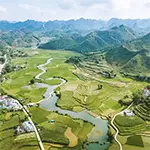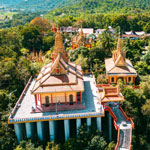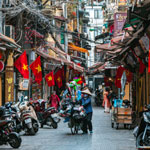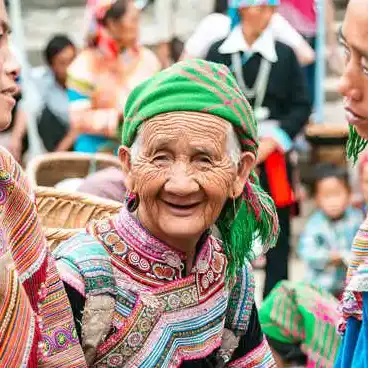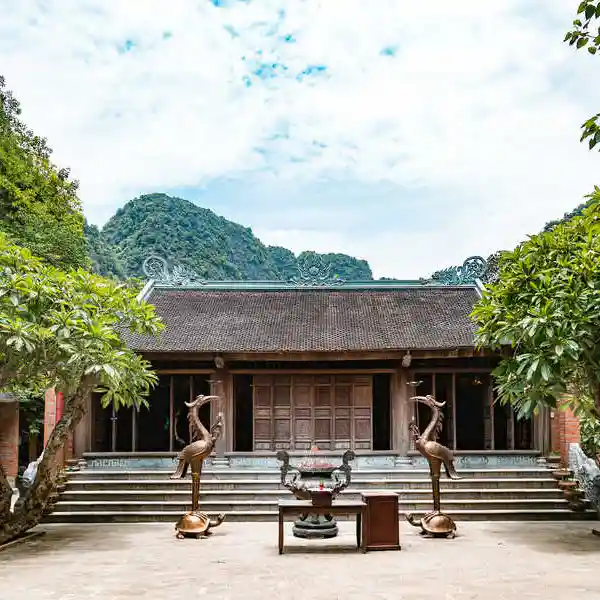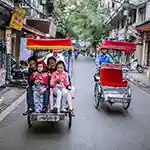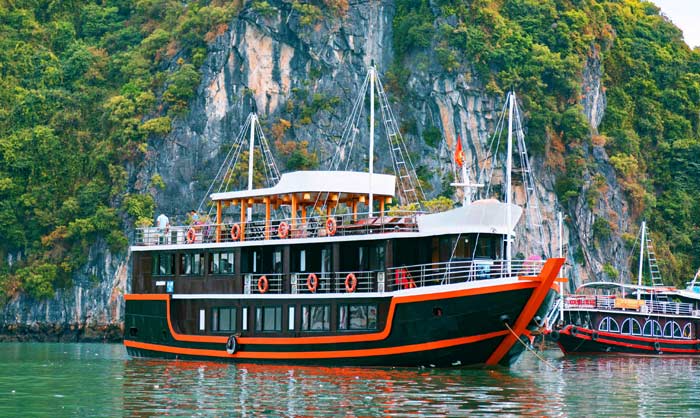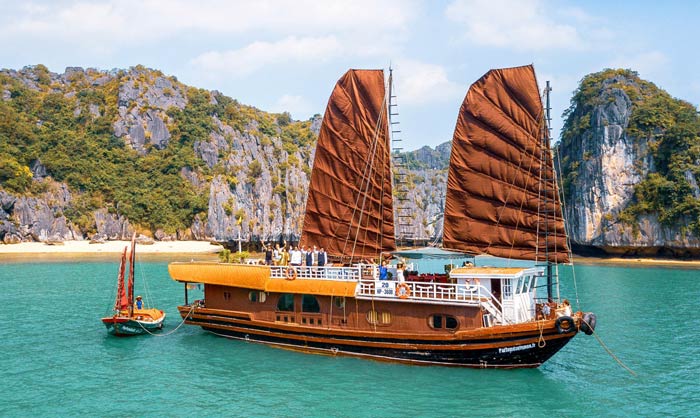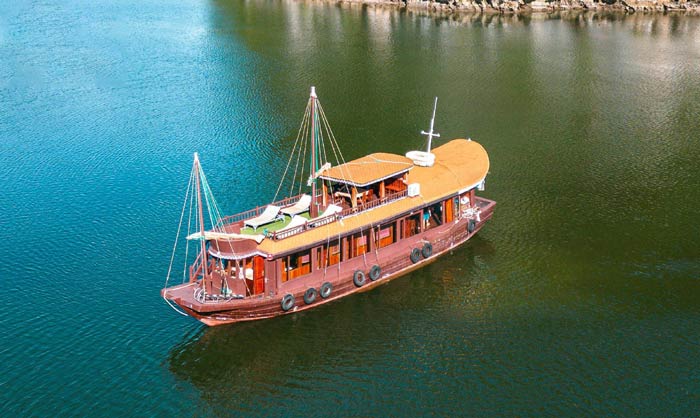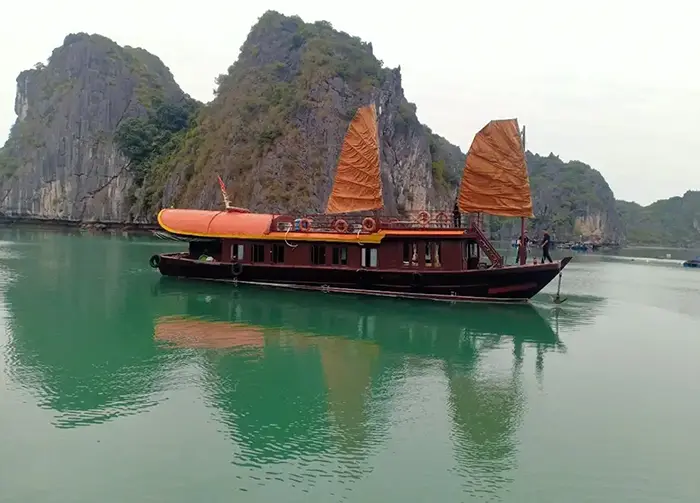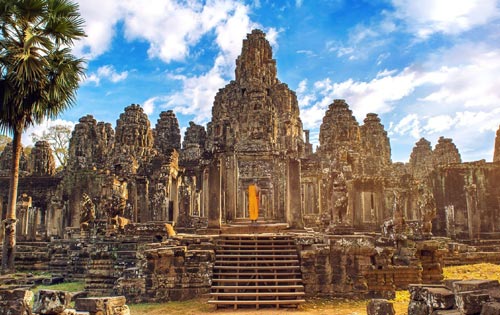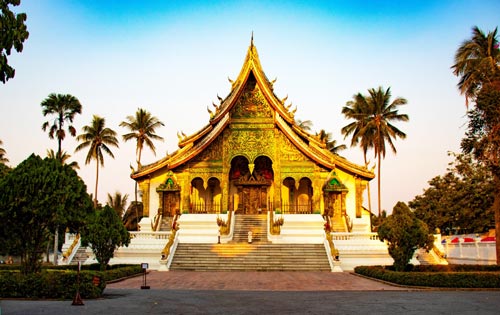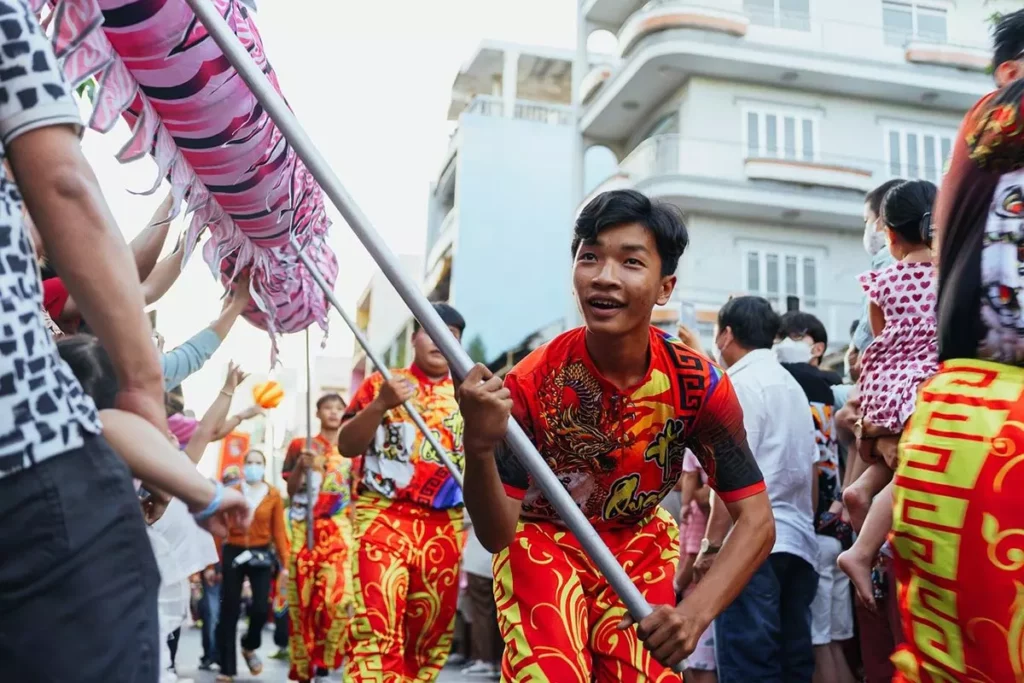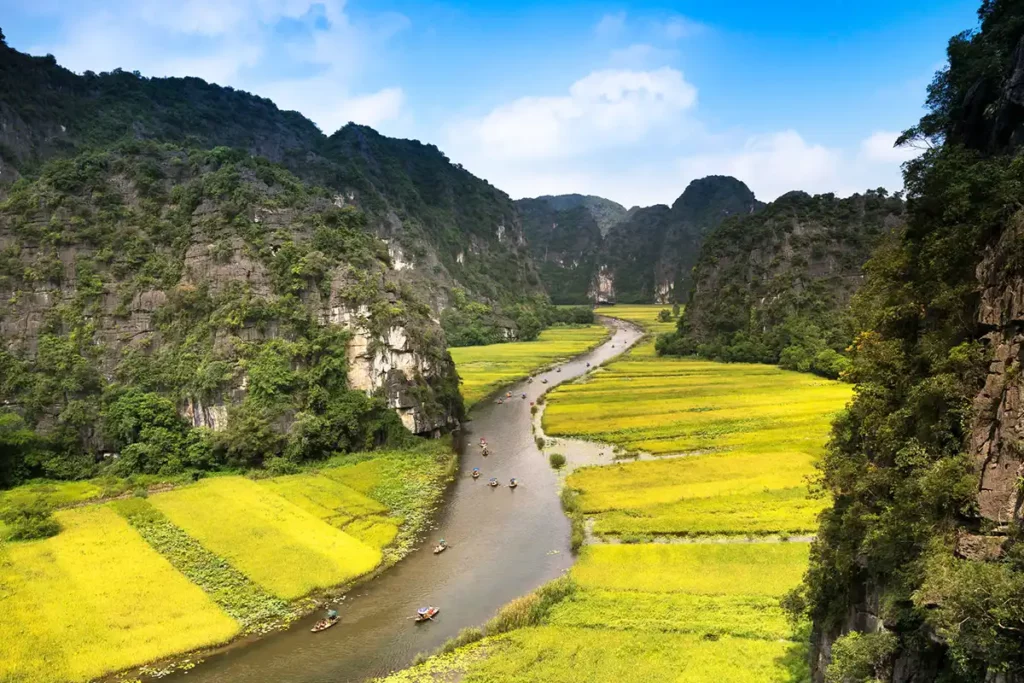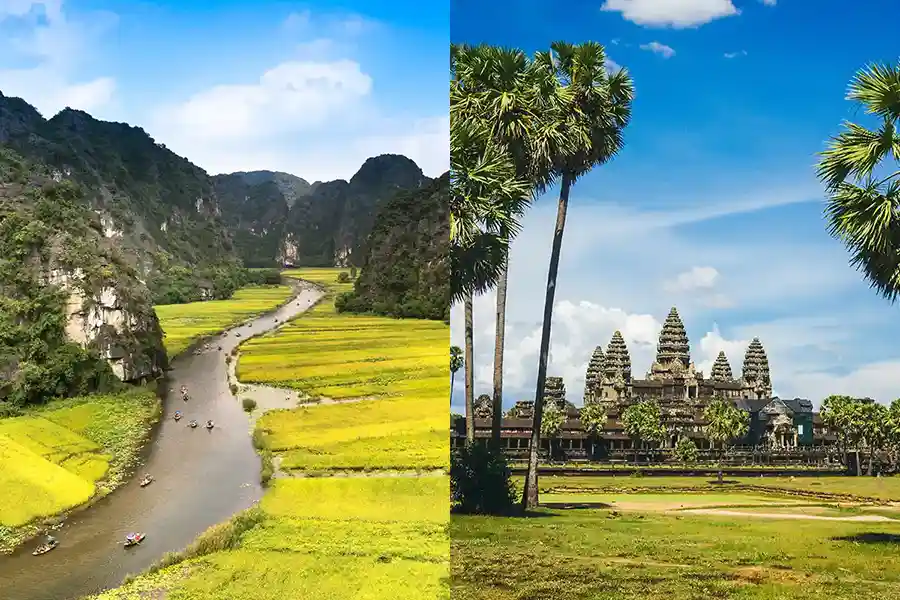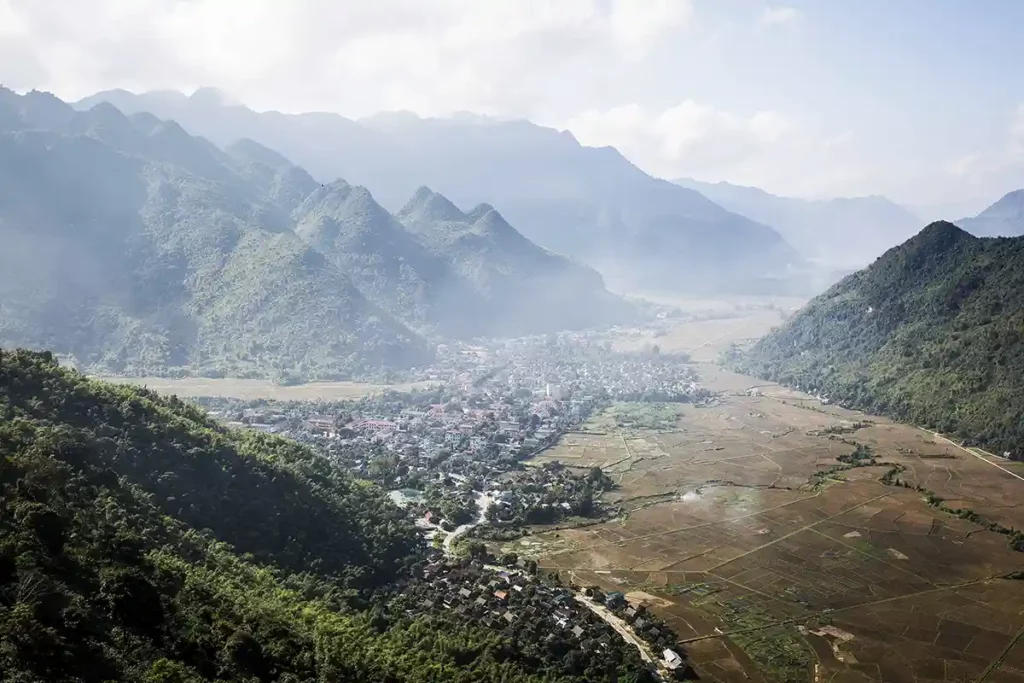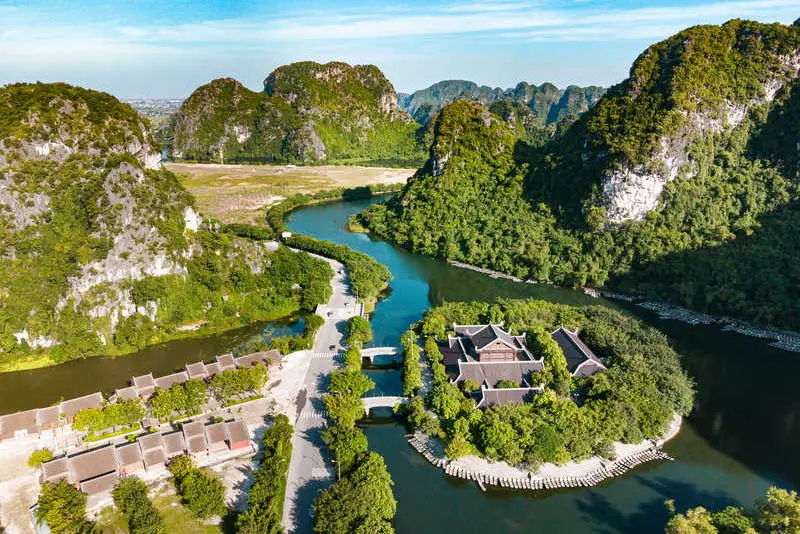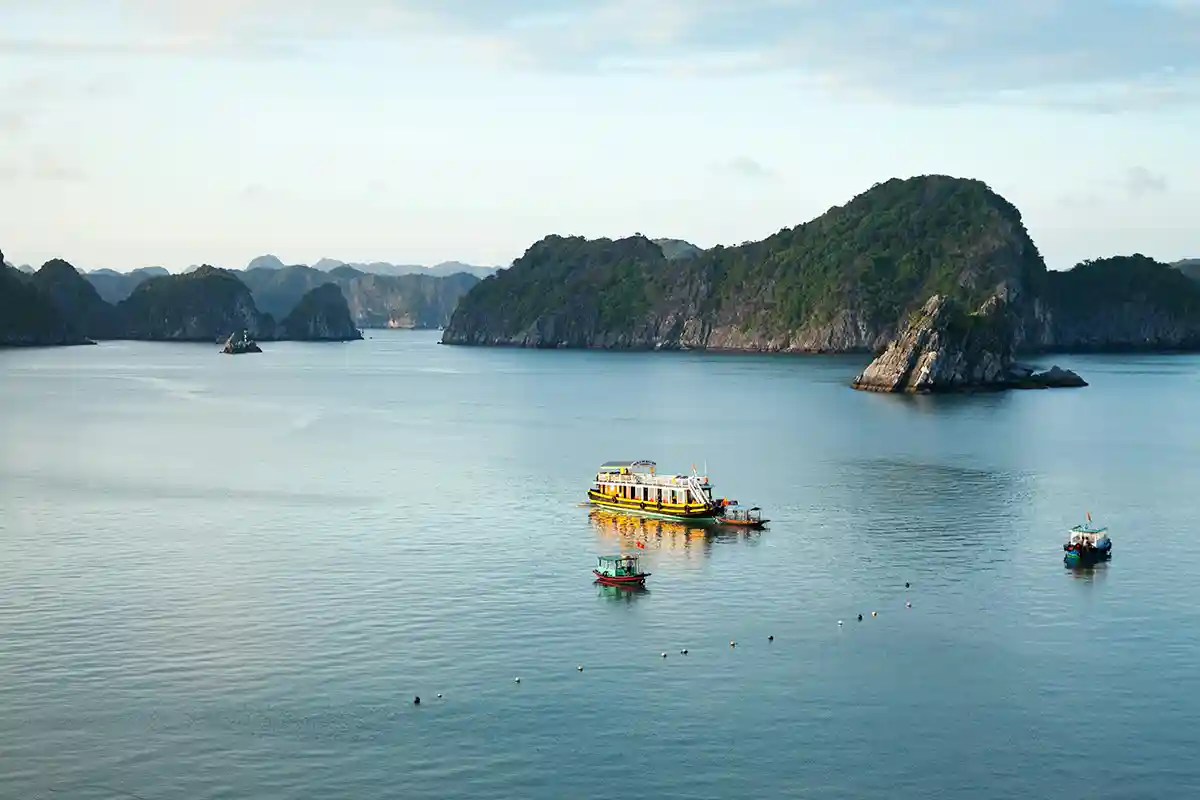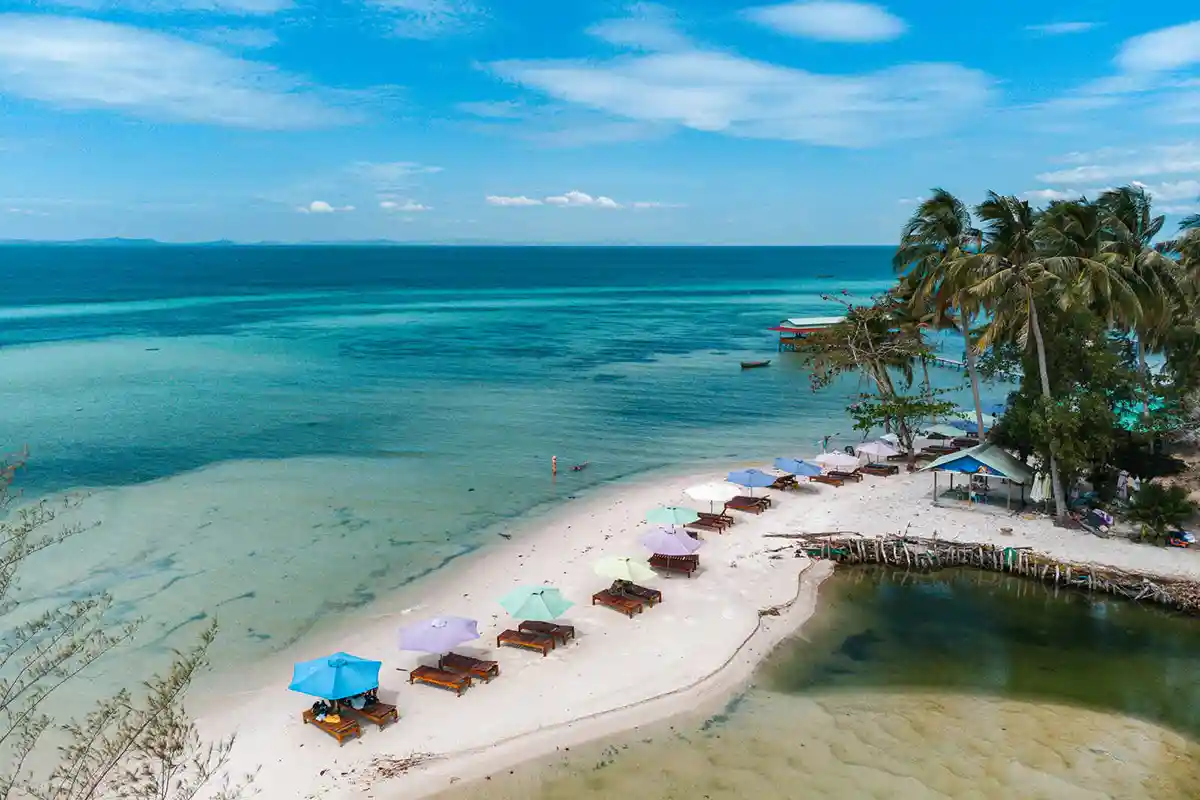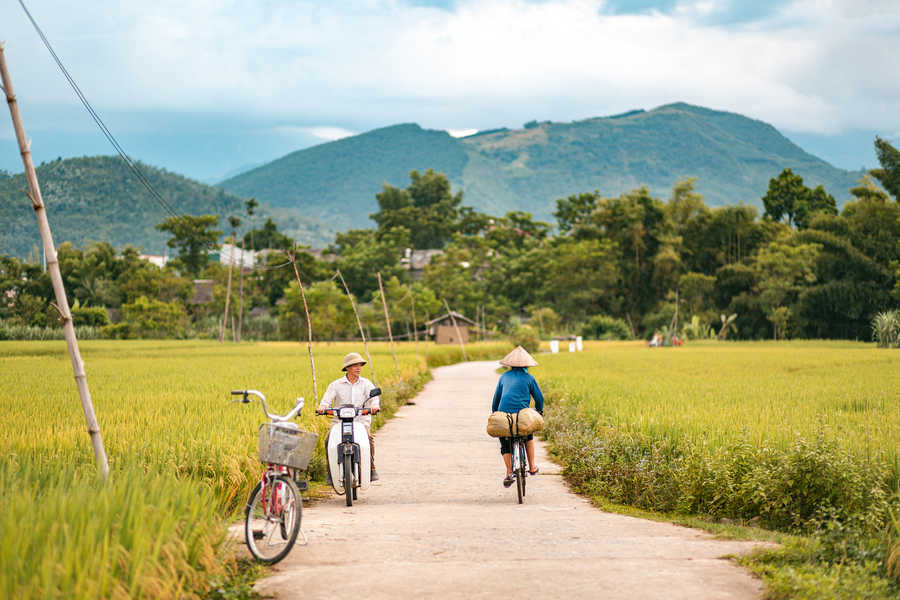February in Vietnam is a time of charm and discovery, where the country awakens in the North in the cool post-Tết atmosphere, offering travelers a unique and authentic experience. From the bustling streets of Hanoi to the tranquil beaches of Phu Quoc, through the rich cultural landscapes of Hué and Hoi An, Vietnam in February is a kaleidoscope of cultures, climates, and colors.
This article will take you through a carefully crafted itinerary, enriched with practical tips to make your February trip an unforgettable Vietnamese experience.
And if you would like to create your own tailor-made itinerary for February, you can send us an online quote request — we will be happy to design a customized trip for you.
Why travelling to Vietnam in February ?
February is a magical month to discover Vietnam, a country with many facets where each region reveals its unique charm. This time of the year is particularly special due to the convergence of several factors favorable for travel.
Firstly, February mostly falls during the festive season of Tết, the Vietnamese Lunar New Year. Although many businesses are closed during this period, the streets and houses are adorned with decorations, and the atmosphere is filled with joy and celebration. It’s a unique opportunity to experience Vietnamese culture in its most traditional and festive aspect.
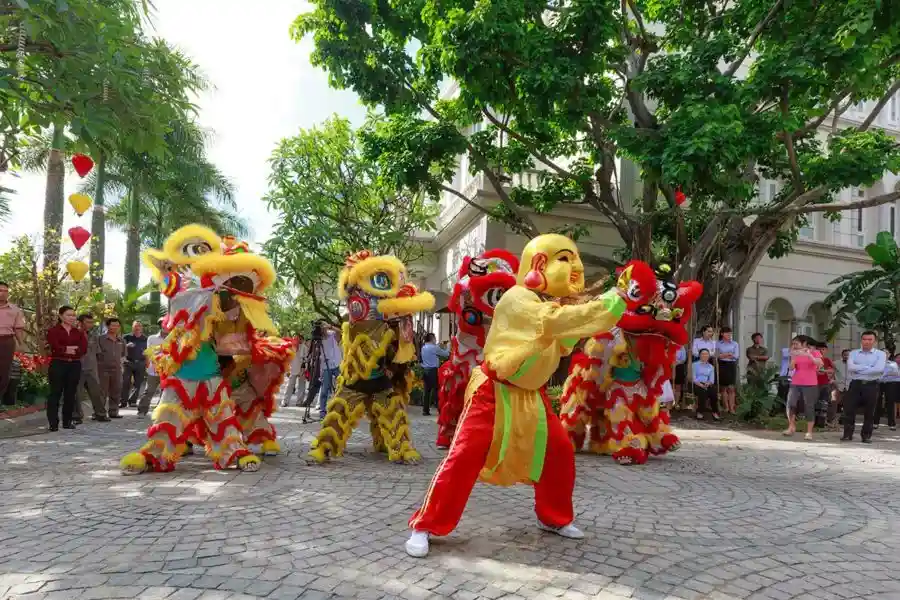
Lion danse during the festive Tet
The climate in February is also a major advantage. While the north of the country is still cool with a morning mist that gives the landscapes a mystical touch, the south enjoys a warm and dry climate, ideal for a beach holiday. This climatic diversity allows travelers to choose their experience based on their preferences, whether it be discovering the misty mountains of the north or relaxing on the sunny beaches of the south.
In February, Vietnam is also less crowded with tourists, offering a more authentic experience. Apart from during the Tết holidays, when Vietnamese people travel, tourist sites are generally less crowded, allowing for a more peaceful and personal exploration. Moreover, the prices for accommodation and activities are often lower after the tourist peak of Tết, making the trip more affordable.
Vietnamese cuisine, known for its freshness and diversity, is another highlight of traveling in February. It is the season for many seafood and fresh products, allowing visitors to taste authentic local dishes in their best form
What is the weather in February in Vietnam ?
Vietnam, with its extensive geography from north to south, exhibits a remarkable climatic diversity in February. This time of the year is characterized by generally pleasant weather, with notable variations between different regions.
In the north, particularly in Hanoi and the Halong Bay area, the climate is cool and sometimes foggy. Temperatures range between 15 and 20°C. This coolness brings a mystical atmosphere to the landscapes, especially in Halong Bay where karst formations stand majestically amidst the morning mist. It is also the ideal time to visit the northern mountains, like Sapa, where the terraced rice fields offer a striking spectacle under the soft winter light
In Central Vietnam, the cities of Hue, Da Nang, and Hoi An enjoy a milder and more stable climate. Temperatures range between 20 and 25°C, creating ideal conditions for exploring the cultural and historical treasures of the region, as well as for enjoying the picturesque beaches. It’s a perfect time to stroll through the ancient streets of Hoi An or explore the imperial citadel of Hue without the oppressive heat or heavy rains.
In the south, especially in Ho Chi Minh City and the Mekong Delta, the climate is warm and dry, with temperatures around 30°C. It’s a favorable time to discover the bustling urban life of Ho Chi Minh City and explore the canals and floating markets of the Mekong Delta. The heat is more bearable than in the summer, allowing for full days of exploration without the discomfort of extreme heat or humidity.
For travelers, it is therefore advisable to dress in layers, especially in the north, where mornings can be cool. In the central and southern regions, light and comfortable clothing is recommended. Don’t forget a hat, sunglasses, and sunscreen, especially if you plan outdoor activities
How to prepare your trip to Vietnam in February ?
Planning a trip to Vietnam in February requires special attention to certain details to ensure a smooth and enjoyable experience. Here are some tips to help you prepare for your adventure.
Travel documents and formalities: First and foremost, ensure your passport is valid for at least 6 months after your entry date into Vietnam. Depending on your nationality, an e-visa may be required. If you are French, no worries, since June 2023, a 45-day visa exemption is granted to you.
Health: Malaria is generally not a problem in major cities or tourist destinations at this time of the year, but preventive treatment may be advised if you plan to visit remote rural areas. Otherwise, a mosquito repellent spray will do just fine.
Flight and accommodation bookings: February is a relatively quiet month, between the end-of-year holidays and the busy tourist season of March-April. You might find more affordable flight and accommodation rates. However, it’s always best to book in advance to get the best deals and avoid last-minute inconveniences, especially if you are traveling during the Tết period.
Itinerary preparation: February is an ideal month to explore both the north and south of Vietnam. However, keep in mind that the climate varies significantly between these regions. Plan your itinerary considering the weather conditions and local events (Tết festival – can’t say it enough!). For example, if you visit the north, prepare for cooler temperatures, while the south will be warmer and drier.
Luggage and equipment: Depending on your itinerary, pack clothes suitable for the climatic variations. Light layers are ideal for adapting to temperature changes. Don’t forget comfortable walking shoes, a hat, sunglasses, and sunscreen. A light raincoat can be useful, especially in the north where occasional showers are possible
Our suggested itinerary in Vitenam in February
Here is a 21-day itinerary for a deep immersion in Vietnam. If the weather in North Vietnam might be less than ideal (cool, light rain), we recommend visiting the must-see places and a lesser-known but highly recommended region at this time: Mai Hich and Pu Luong. Indeed, in February, rice is not yet planted in the mountains, which is the case in the plains experiencing 2 harvests per year. And the best place to enjoy this is Pu Luong, a beautiful natural reserve located 4 hours from Hanoi. Here is the itinerary we recommend.
North Vietnam : Hanoi, Mai Hich, Pu Luong, Ninh Binh, Lan Ha bay
Days 1-2: Hanoi
Begin your journey in Hanoi, the pulsating heart of Vietnam. This historic city is a fascinating mix of the old and the modern. Devote your first day to exploring the Old Quarter, with its narrow alleys and traditional houses. Visit Hoan Kiem Lake, the Temple of Literature, and the Ho Chi Minh Mausoleum. On the second day, dive into the local culinary scene, trying specialties like Pho and Egg Coffee. In the evening, attend a traditional water puppet show.
Days 3-4 : Mai Hich
Your next stop is Mai Hich, a peaceful village in the Hoa Binh province. Here, you can immerse yourself in rural Vietnamese life. Take a hike through the terraced rice fields and meet the local communities. The stilt houses provide unique accommodation and an authentic experience.
Days 5-6 : Pu Luong
Continue to the Pu Luong Nature Reserve, a paradise for nature lovers. This area is known for its picturesque landscapes, with terraced rice fields, lush mountains, and ethnic villages. Go hiking to explore the biodiversity of the reserve or relax in an eco-lodge.
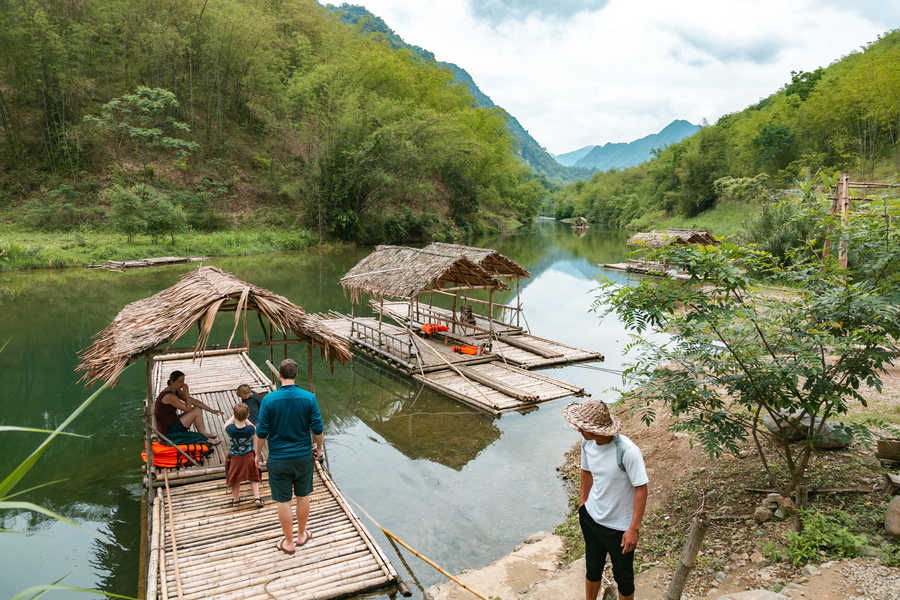
Landscape of Pu Luong. Crédit : Mathieu Arnaudet
Days 7-9 : Ninh Binh
From Pu Luong, you can directly reach Ninh Binh, often described as the ‘Halong Bay on land’. Explore the karst landscapes by bike or boat, navigating through rivers and rice fields. Visit historical sites like the Trang An complex and Bai Dinh Pagoda. Ninh Binh is a perfect blend of nature, history, and culture, offering a beautiful summary of everything that Northern Vietnam has to offer.
Days 9-10 : Lan Ha bay
After exploring on land, head to Lan Ha Bay, a less crowded extension of Halong Bay. From there, you can take a cruise to admire the karst formations, swim in crystal-clear waters, and visit hidden caves. Spending the night on a boat offers a peaceful experience and unforgettable views
This 10-day itinerary in Northern Vietnam in February will allow you to discover the diversity and beauty of this region, with a balanced mix of cultural, historical, and natural activities.
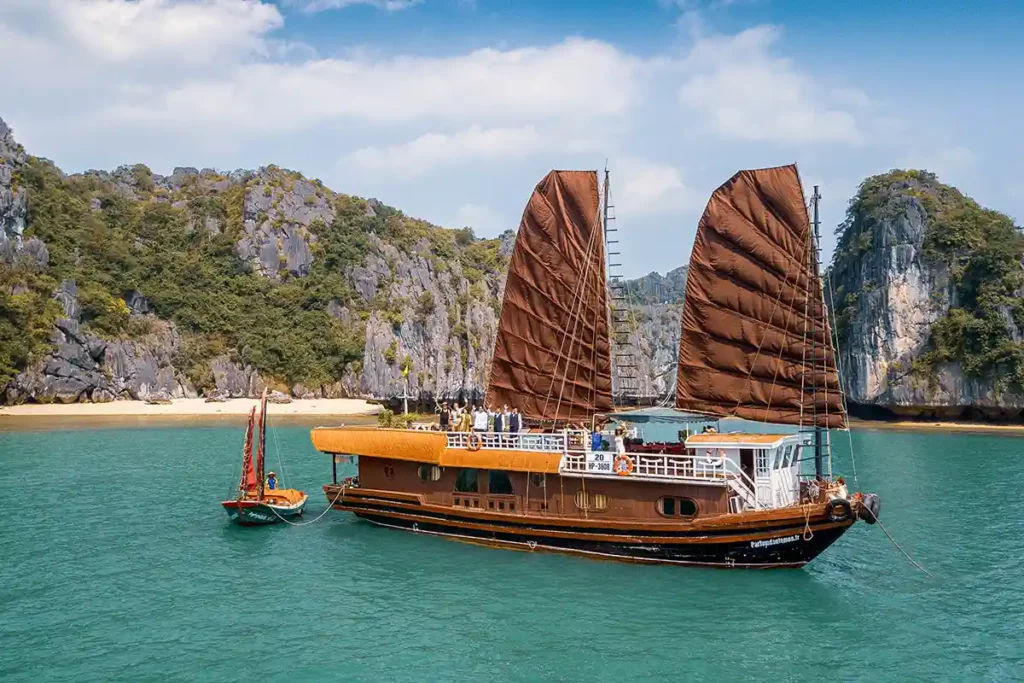
Let’s continue the itinerary with the Central part of Vietnam.
Central Vietnam : Hue, Danang, Hoi An
Days 11-12 : Hue
To get to Hue, you have a choice: fly from Hanoi, or take the train from Ninh Binh, depending on the order of your visits in the North.
Hue is famous for its Citadel, housing the ancient Imperial City and the Forbidden Purple City. Explore the tombs of the Nguyen emperors and take a cruise on the Perfume River. Hue offers a fascinating glimpse into Vietnam’s royal history.
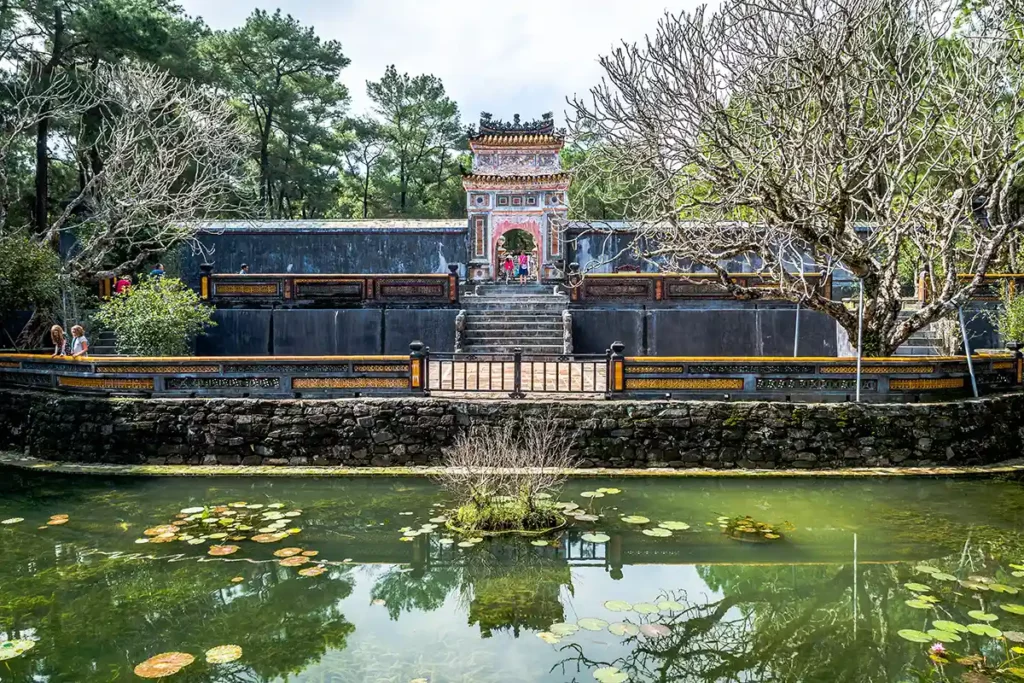
Emperor Tu Duc tombe, Hue, Vietnam. Crédit : Prépare ta valise.
Days 13-14-15 : Da Nang and Hoi An
Then head down to Da Nang, a modern city located on the central coast of Vietnam. Spend a day exploring the beaches of Da Nang and Marble Mountain, a significant religious and historical site. The next day, head to Hoi An, an ancient city listed as a UNESCO World Heritage Site. Wander through its charming streets, lined with colorful lanterns and traditional architecture. Don’t miss the Japanese Bridge and the many craft shops. In the evening, Hoi An lights up with lanterns, creating a magical atmosphere.
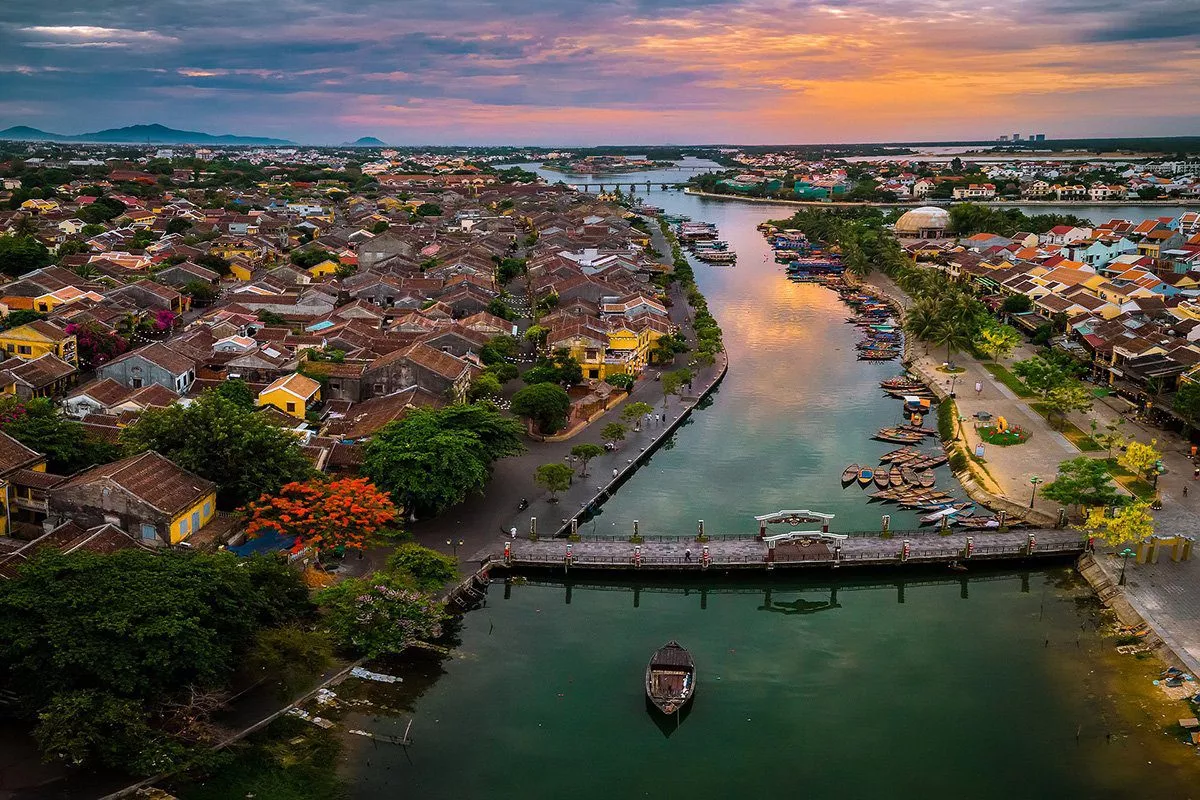
Aerial view of Hoi An, Vietnam
Southern Vietnam : Ho Chi Minh-City, Mékong delta and Phu Quoc
Days 16-17 : Ho Chi Minh City
Take a flight from Danang to Ho Chi Minh City, the economic center of Vietnam. Explore historical sites like the Central Post Office, Notre-Dame Cathedral, and the War Remnants Museum. Discover the city’s dynamism, its bustling markets, and its culinary scene.
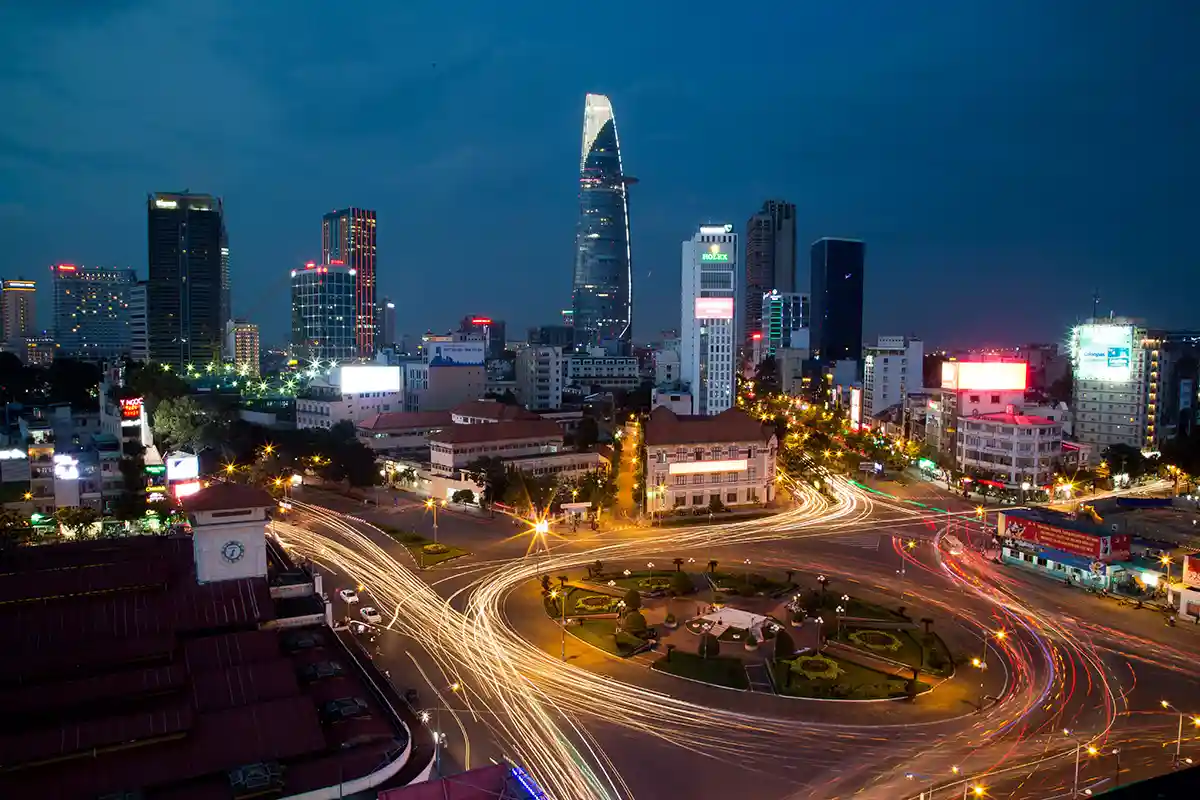
Saigon by night
Days 18 – 19 : Mékong delta
Head south to explore the Mekong Delta. Take a river cruise to see the floating markets, lush orchards, and traditional villages. It’s a unique opportunity to experience local life along the canals and to taste fresh tropical fruits and regional specialties. You can also visit local craft workshops, such as those producing coconut candies or rice noodles.
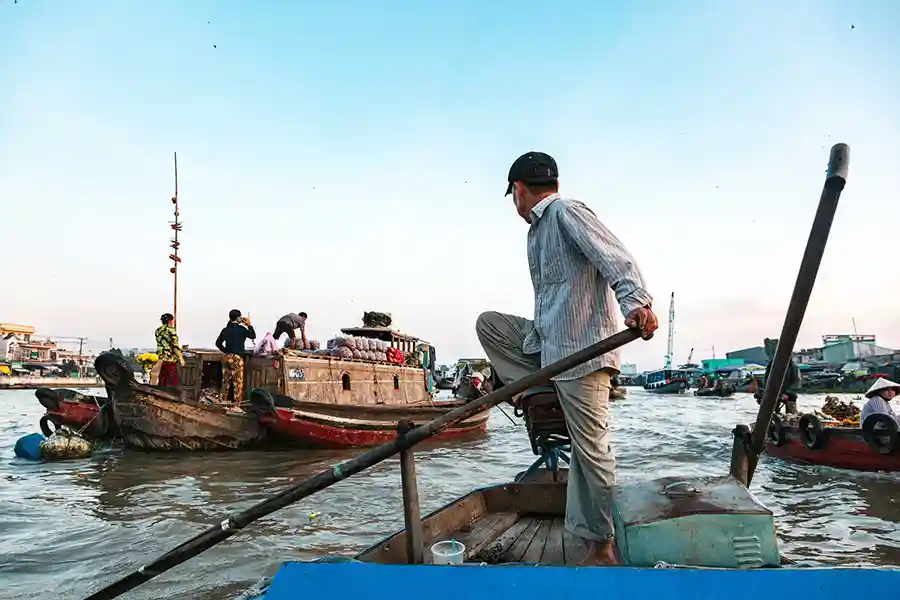
Cai Rang flotting market, Can Tho. Crédit : Mathieu Arnaudet
Days 20 – 21 : Phu Quoc
Finish your trip with a relaxing stay on Phu Quoc Island, a tropical paradise off the southern coast of Vietnam. Enjoy the white sandy beaches, crystal-clear waters, and spectacular sunsets. Phu Quoc is also known for its production of fish sauce and black pepper, so don’t forget to visit a pepper farm or a fish sauce factory. It’s the perfect place to relax and reflect on the incredible experiences you’ve had during your 21-day journey through Vietnam.
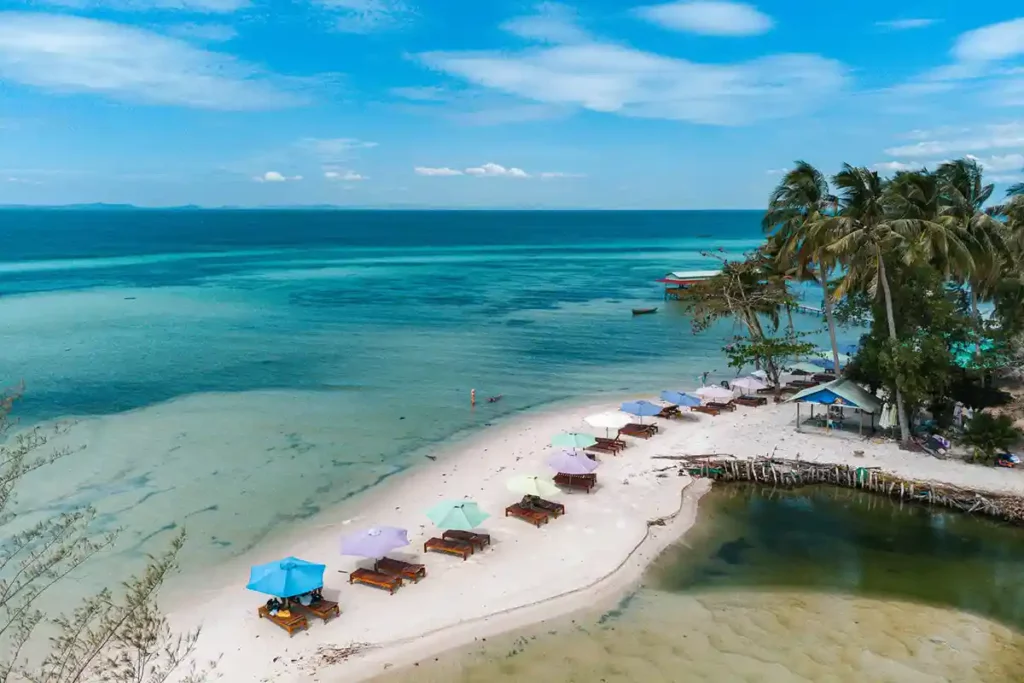
Sao Beach, Phu Quoc. Crédit : Mathieu Arnaudet
This tour offers a deep immersion into the cultural, historical, and natural diversity of Vietnam, from its bustling cities to its tranquil landscapes, through its historical sites and idyllic beaches. Each destination has its unique charm, ensuring a rich and memorable travel experience.
Practical tips for travelling to Vietnam in February
General advice
Personal safety: As in any tourist destination, be careful with your personal belongings, especially in crowded places. Use zippered bags and avoid displaying valuables in public. You can benefit from reading our complete article on safety in Vietnam.
Currency and payments: In Vietnam, you will need to use the Vietnamese Dong for daily transactions. ATMs are widespread in cities but less so in rural areas. Some establishments accept credit cards, but with additional fees.
Connectivity: Purchase a local SIM card for easy connectivity. They are available at the airport or in phone shops and offer data packages at reasonable prices.
Negotiating in markets: Bargaining is common in Vietnamese markets. Approach it with a smile and a respectful attitude. It’s part of the cultural experience, but remember to be fair in your offers
Specific advices for February
Tet Festival: In 2024, the first day of the lunar year falls on February 10. The Vietnamese will officially be on holiday from February 8 to 13. This period is dedicated to family, and it is thus difficult to book tourist services during this time – unless you plan well in advance. Many restaurants will also be closed, especially in small and medium-sized towns where the influx is less significant and where traditions remain very important.
Culture and Traditions: Tet is a time rich in customs. Respect local traditions, participate in the festivities if possible, and take the opportunity to learn more about Vietnamese culture.
Clothing: Plan for light clothing in the south and extra layers for the cooler northern regions (even gloves and a hat for mountainous areas),
You now have all the necessary information for traveling to Vietnam in February. Feel free to contact us in order to organize your tour

